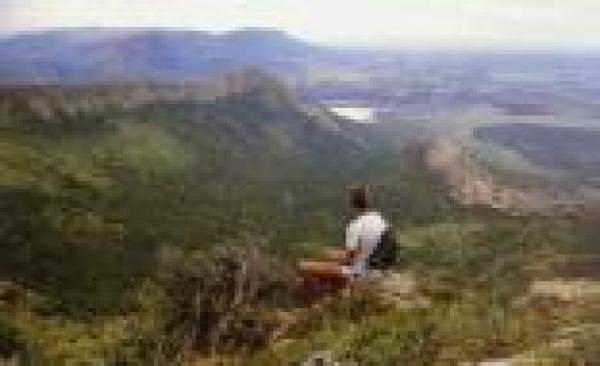There are various trails in the area. Hikers are responsible for obtaining permission or permits from private landowners for hiking. Contact the Johannesburg office of the Mountain Club of South Africa for more information. There are some holiday resorts and camp sites on the trails, as well as the Hartebeespoort Dam recreational complex.
The area is very popular during weekends and holidays. There are strict control regulations and a limited number of permits per day are issued to members of the public.
For the highveld hiking enthusiast, the Magaliesberg provides the only suitable wilderness environment close to home.
Declared a Natural Heritage Site in 1977, this range, comprising hard, resistant quartzites, and rising an average of 330 m above the surrounding plains, remains the last relatively untouched area in the south-central Transvaal.
Stretching 125 km from east to west and spanning art elevation between 1 372 m and 1 829 m, the Magaliesberg forms a conspicuous divide between the lower-lying, hot bushveld to the north and the cooler highveld to the south.
Because flora and fauna distinct to both regions merge along the range, the Magaliesberg harbours a diversity of indigenous species. Examples of the many interesting plants are the endemic Aloe peglerae and the kloof-dwelling tree fern, Cyathea dregei.
More than 150 species of birds have been recorded, including the colourful crimson-breasted shrike, plum-coloured starling, paradise whydah, crested barbet and a large number of raptors. The endangered Cape vulture breeds on the steep mountain cliffs.
Mammals frequently seen are chacma baboons and vervet monkeys, dassies, grey duiker, reedbuck and klipspringer. Although most of the indigenous big game has been exterminated, predators such as leopard, brown hyaena and aardwolf have managed to survive.
Summer in the Magaliesberg is characterized by hot, rainy days and cool nights; the winter days are clear and cool, the nights cold.
